| There have been times on this trip where the camera has failed me
because I just can't get the total picture. This is another of those cases.
This is the top half of 'Big Tree', a giant redwood in the Prairie Creek
Redwoods State Park which is one of the group of parks making up the
Redwoods National Park. There is an area further south in the park (and more
inaccessible) where the trees are taller. But we thought it was unlikely we
could tell the difference between 300ft and 360ft. | 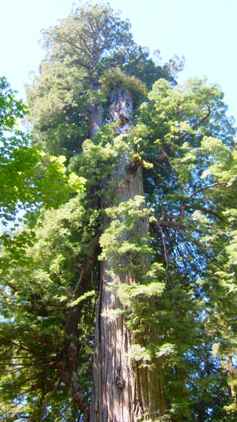 |
| This is the bottom half of the tree. More or less - I've not
attempted to join them up. Both parts were shot in vertical panorama mode.
If you look carefully, you can just see Jan at the bottom of the tree. The
frightening thing is that we only knew this is 'Big Tree' because it says
so. In this forest, it does not seem remarkable. We went on the Cathedral
Trees walk and they all look about this size. | 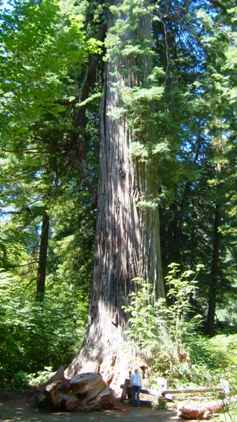 |
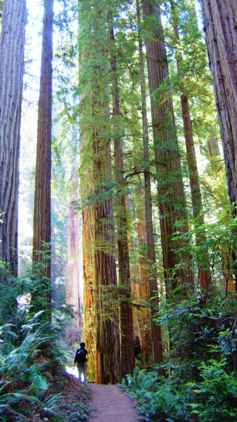 | They have very
few branches and in our view not enough canopy to sustain a tree of this
size. Small wonder that they can be up to 2000 years old. They also grow
very close together so some of the trees which look massive are in fact
multiple trunks. |
| The relatively sparse canopy allows sunlight to filter through.
But there is also not as much undergrowth as you might expect. Most of that
is ferns which normally need to be wet but the ground appeared quite dry.
However the coastal microclimate here, which is what allows these few
redwoods to survive while all other such forests have disappeared, is quite
moist and cool.
The tree on an angle may well have died. There just isn't the space for
them to fall over. Other trees may start growing on them as if they had
fallen so you get the peculiar effect of trees on trees. | 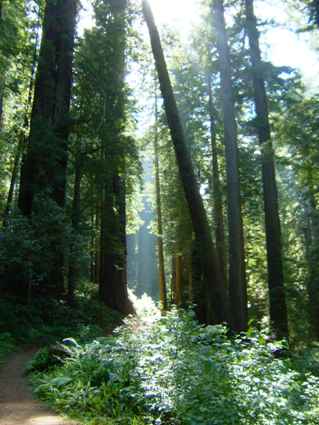 |
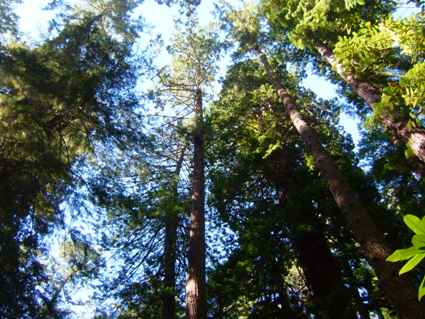 | This is a view of
the canopy so you can get some idea of how few leaves there are for a 300ft
tree. This is not at all like we would get with an oak, and conifers are
also usually denser. |
| Redwoods have no taproot but do have huge root systems which are
quite shallow and can spread hundreds of feet from the tree. |  |
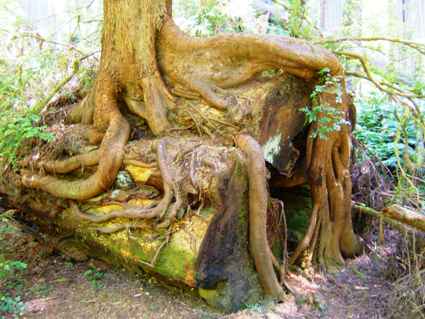 | Dead trees are
growth medium just the same as soils and here we have an example of just
what happens. This tree has just grown on a stack of logs (each 2ft in
diameter). Redwoods apparently do this whereas many other species do not. |
| Eventually when a tree falls naturally it breaks at the roots.
This particular cluster must have been 12 ft high. You also find this sort
of thing on the beaches, thrown up as driftwood!. | 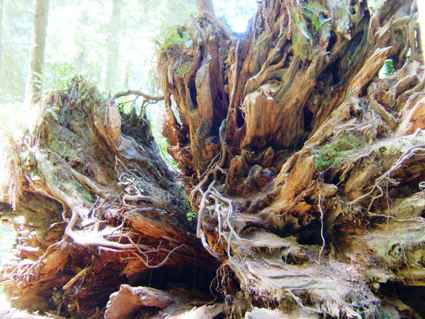 |
 | The trees in the park
have not been felled but some have fallen across the paths. The tree in this
case was so large they cut an archway through for the path rather than the
more common cutting out of a complete cross section.. |
| Here
the fallen tree had just been cut away to clear the path. After all the
trunk is only 6 ft in diameter. We didn't try to count the tree rings.... | 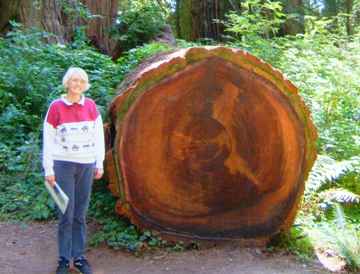 |
 | Since we were so close to the coast we travelled the six miles
(of gravel road, on the scooter) to the beach. Only to be met with the
typical sea fret and mist so common here which was not in evidence within
the forest. The forest was also warmer. |
|